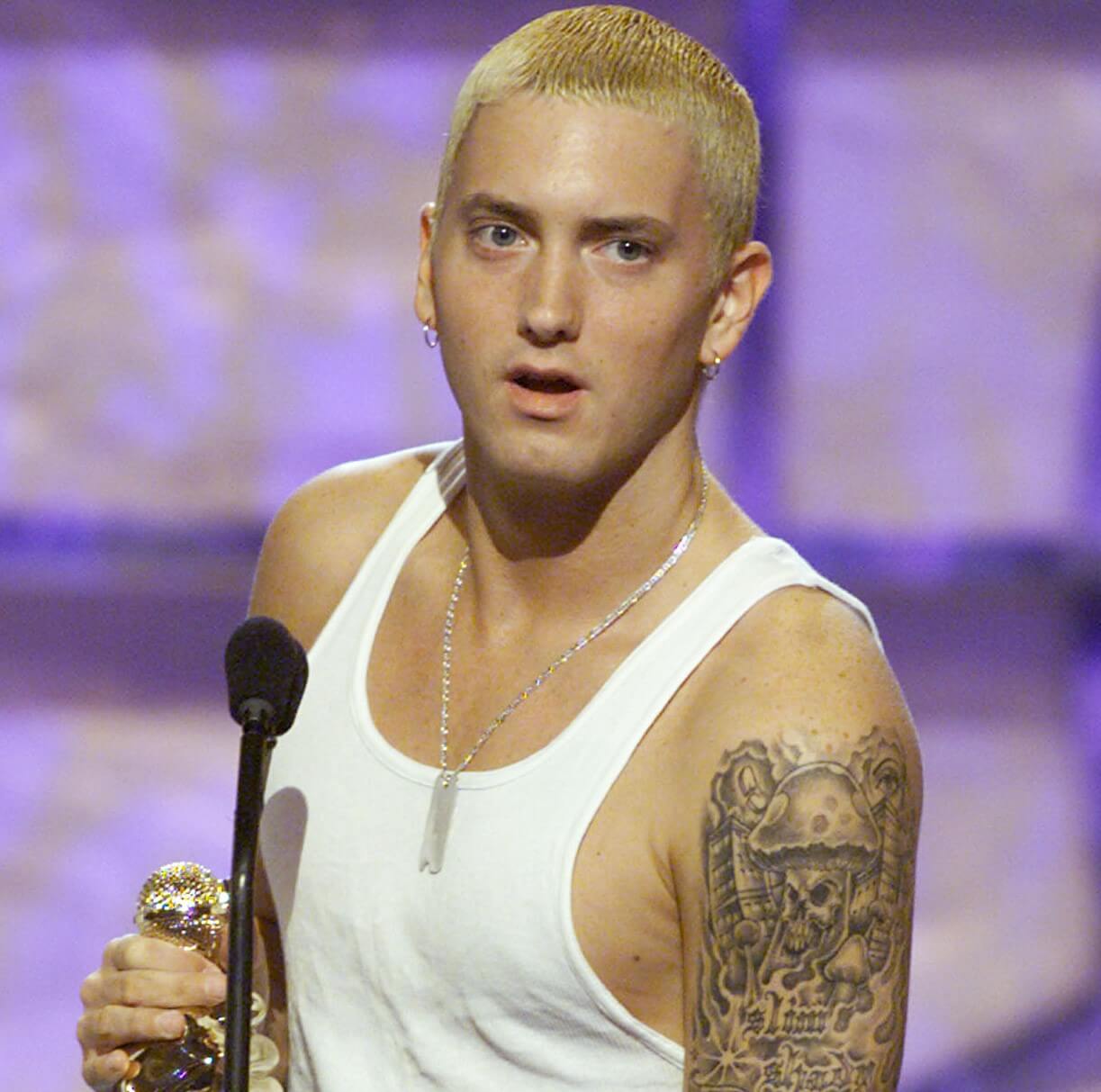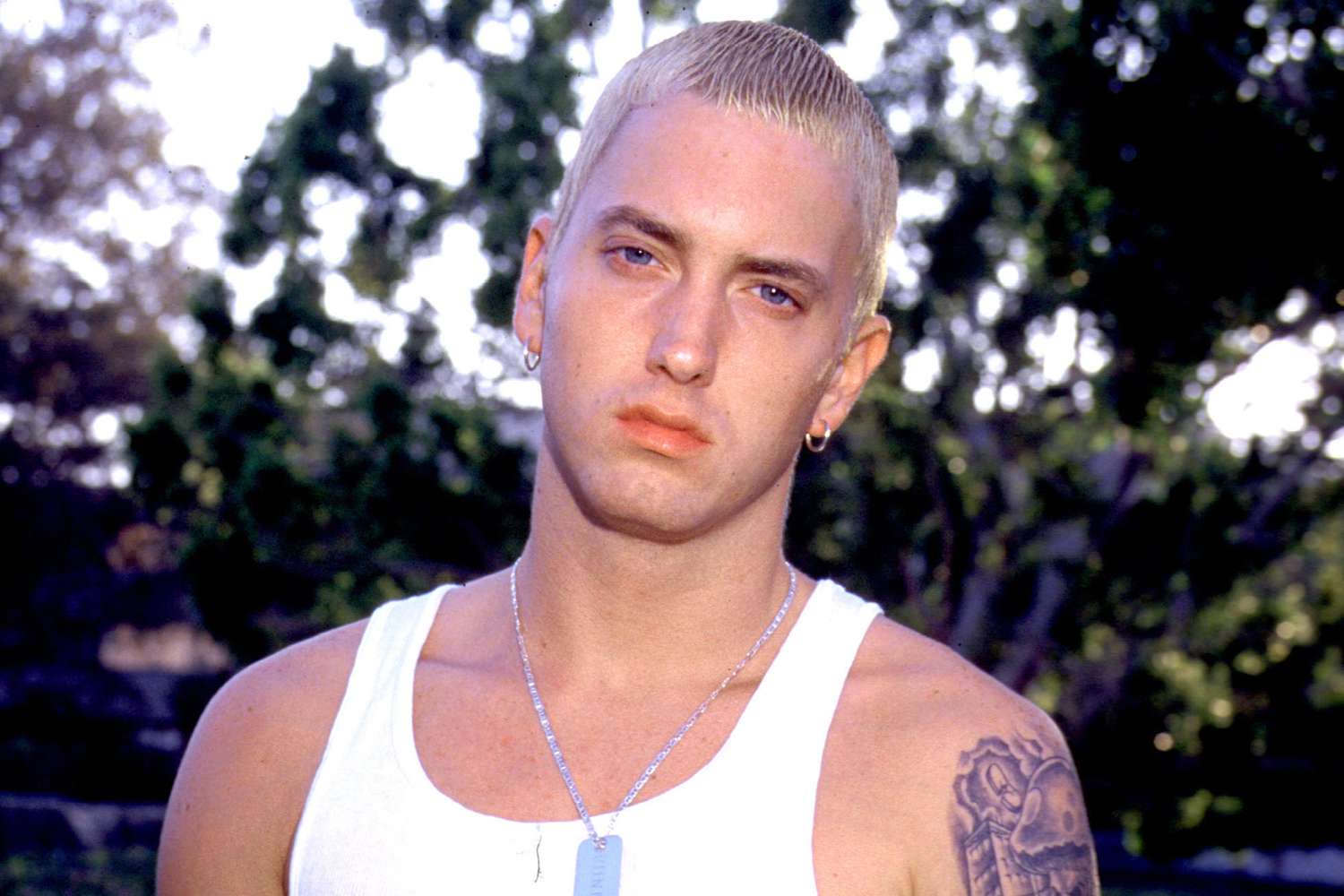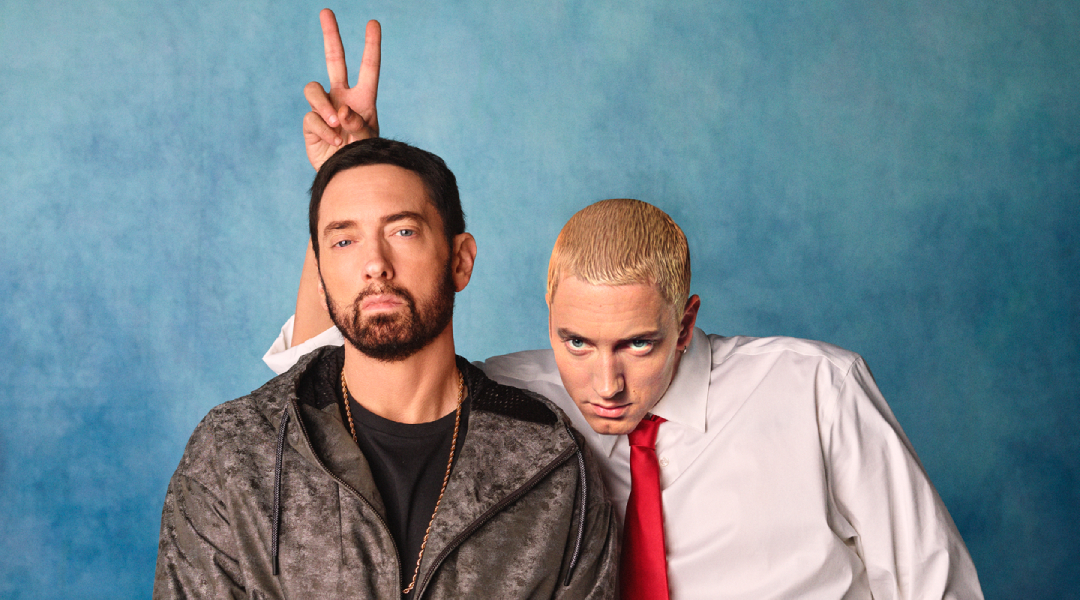Unpacking Slim Shady: The Enduring Persona That Shook Music
Have you ever wondered about the force behind some of the most memorable tunes in hip-hop? Perhaps you remember hearing a certain request for someone to "please stand up." Well, that's where the story of slim shady truly begins for many. This isn't just a character; it's a whole vibe, a way of expressing things that few artists dared to touch. It really captured a specific moment in music, and honestly, it still holds a lot of sway over how we talk about artist personas today. You might be curious, like, what made this persona so impactful, and why do we still talk about him so much?
This particular alter ego, a creation by the rap musician Eminem, burst onto the scene with a distinct style and a voice that was both shocking and incredibly clever. He appeared as the main figure in some really important albums, like "The Slim Shady LP" and "The Marshall Mathers LP." These records, you see, showcased a kind of lyrical acrobatics and storytelling that was, frankly, quite new to many listeners. The image of this character is, in a way, just synonymous with how Eminem looked and sounded during that time, a look and sound that really got people talking, and in some respects, still does.
It's fascinating how a fictional character can become such a significant part of a real artist's identity, you know? The songs featuring this persona, like "My Name Is" from 1999 and, of course, "The Real Slim Shady" from 2000, really cemented his place in popular culture. Just recently, a rather interesting thing happened: a fake obituary for Eminem's longtime alter ego appeared in the Detroit Free Press. This news came out as the rapper gets ready for new things, and it really just shows how much this character still means to people, even all these years later. It's almost like he’s a living, breathing part of music history, still making headlines, in a way.
Table of Contents
- The Story of Slim Shady: A Persona's Journey
- "The Real Slim Shady": A Song's Impact
- Music Video Moments and Live Performances
- Lyrical Genius and Persona Themes
- The Enduring Presence of Slim Shady
- Why Slim Shady Still Matters
- Frequently Asked Questions About Slim Shady
The Story of Slim Shady: A Persona's Journey
The character known as slim shady is, to be honest, a fictional creation. He came from the mind of the rap musician Eminem. This persona isn't just a name; he actually shows up as the main figure in some of Eminem's most well-known albums. Think about "The Slim Shady LP" and then "The Marshall Mathers LP." These records, you see, really gave the persona a place to live and breathe, musically speaking. It's a bit like a character in a play, but instead of a stage, he has a microphone and a beat. His appearance, his attitude, and the way he spoke through the music became very much linked to how Eminem was perceived during that time. It's pretty clear, this character was a big part of how the artist presented himself to the world, shaping his public image quite a bit, really.
Personal Details & Bio Data: Slim Shady
| Creator | Eminem (Marshall Mathers III) |
| Debut Album Appearance | "The Slim Shady LP" (1999) |
| Notable Song References | "My Name Is" (1999), "The Real Slim Shady" (2000) |
| Associated Albums | "The Slim Shady LP", "The Marshall Mathers LP" |
| Core Traits | Funny, serious, crazy rhyme schemes, unpredictable, controversial |
| Recent Mentions | Fake obituary in Detroit Free Press (2024), "Complex" cover story video conversation (July 2024) |
This persona, you know, it's more than just a stage name. It represents a particular side of the artist, a kind of unfiltered, often provocative voice that could tackle various topics with a unique blend of humor and seriousness. The way Eminem would bring this character to life in his songs, it just seemed to connect with so many listeners. It was a way, perhaps, to explore different ideas and feelings that might have been harder to express directly. The character really allowed for a lot of creative freedom, letting the music go to places that were, frankly, quite daring for the time. It's almost like a separate entity, yet totally connected to the artist who created him, a rather interesting dynamic, if you think about it.
"The Real Slim Shady": A Song's Impact
"The Real slim shady" is a song that truly made waves. It came out as the lead single from Eminem's third studio album, "The Marshall Mathers LP," back in 2000. This single dropped a whole month before the album itself, which really built up a lot of excitement. It's pretty clear, this song became, for many, the quintessential early Eminem track. It had this amazing mix of being funny and serious at the same time, which was a real skill. The song also showed off some truly crazy rhyme schemes and other clever language tricks. It was, you know, a piece of music that just stood out, making people pay attention to every word, and in a way, it still does.
The song's structure and its lyrical content were, honestly, quite groundbreaking. It had this playful yet biting tone that was completely unique. The way words were put together, the unexpected turns in the rhymes, it all just made for a listening experience that was, frankly, very engaging. You could hear the careful thought that went into every line, making it a very dense and rewarding listen. It's a song that, for many, really defined an era of hip-hop, showing what was possible when an artist pushed the boundaries of lyrical expression. It truly became a cultural touchstone, in some respects, a moment that people still look back on and talk about with a lot of enthusiasm.
The chorus of "The Real slim shady" is, of course, incredibly catchy and memorable. The lines, "I repeat, will the real slim shady please stand up?" became an instant classic. This phrase, you know, it just invites participation, making everyone feel like they're part of the moment. And then, there's the part where it says, "But if you feel like I feel, I got the antidote women wave your pantyhose, sing the chorus and it goes [chorus]." This kind of direct address to the audience, inviting them to join in, was very effective. It helped to create a shared experience, a collective understanding of what the song was about. It was, frankly, a very smart way to get people involved and make the song stick in their minds, which it definitely did.
Music Video Moments and Live Performances
The music video for "The Real slim shady" is, without a doubt, as iconic as the song itself. It's listed as a music video by Eminem performing the song, produced by (c) 2000 Aftermath Entertainment/Interscope Records. This visual piece really brought the persona to life in a way that just stuck with people. The imagery, the scenes, they all played a big part in how the public understood this character. It wasn't just about hearing the words; it was about seeing the world through his eyes, which was, frankly, a very powerful combination. The video, you know, it just added another layer to the song's meaning, making it even more impactful for viewers, and it really helped to cement the persona's place in popular culture.
One of the most talked-about moments related to "The Real slim shady" happened at the MTV Music Video Awards. As many fans can recall, Eminem performed the song at this event, and it was quite a spectacle. He came out with an army of peroxide blondes who looked, honestly, identical to the rapper himself. This visual stunt was, in a way, a brilliant piece of performance art. It played directly into the song's theme of asking "who is the real one?" and it made a very strong statement. The sheer visual impact of so many look-alikes, it just created a moment that people still talk about to this day. It was, frankly, a very bold and memorable performance, one that really showcased the theatrical side of the persona.
During that MTV performance, the lines "Please stand up, please stand up" took on a whole new meaning. Imagine the scene: Eminem, surrounded by all these identical figures, asking the audience to identify the "real" one. It's a clever trick, really, making the audience part of the narrative. The energy in the room must have been incredible, with everyone wondering what would happen next. It's moments like these, you know, that really turn a song into a cultural event. The performance, in a way, amplified the song's message, making it more than just music; it made it an experience. It truly showed how much thought went into presenting this persona to the world, and it was very effective.
Lyrical Genius and Persona Themes
The lyrical content of songs featuring slim shady is, to be honest, a masterclass in wordplay. The provided text mentions "crazy rhyme schemes and devices," and that's absolutely true. Eminem, through this persona, would craft lines that were incredibly intricate, often weaving together multiple rhymes within a single sentence. This kind of verbal dexterity was, frankly, quite rare at the time, and it made listeners really pay attention. The way he could tell a story, switch tones, and use language in such unexpected ways, it was truly something to behold. It's almost like a puzzle, in a way, trying to keep up with all the clever turns of phrase, and it really made the music stand out.
The persona allowed Eminem to explore themes that were, frankly, often quite controversial or uncomfortable. He could be funny and serious simultaneously, tackling social commentary, personal struggles, and pop culture critiques all within the same song. This dual nature was a hallmark of the slim shady character. He could mock celebrities one moment and then deliver a powerful message about societal issues the next. This range was, you know, a big part of what made the persona so compelling. It wasn't just about shock value; there was often a deeper point being made, even if it was hidden behind layers of dark humor. It truly made for a very thought-provoking listening experience, and in some respects, still does.
The idea of identity is, in a way, central to the slim shady persona. The very question, "Will the real slim shady please stand up?" points to this. It makes you think about who the artist really is, and how much of the persona is truly them. This kind of self-awareness, or perhaps self-questioning, within the music was, frankly, quite unique. It invited listeners to consider the line between the artist and the character, which made the music feel more personal and intriguing. The persona was a vehicle for expression, allowing for a kind of freedom that might not have been possible otherwise. It really showed how an artist could use a character to explore complex ideas about who they are and what they represent, which is pretty cool.
The Enduring Presence of Slim Shady
Even after all these years, the presence of slim shady continues to be felt in popular culture. There will, it seems, never be another slim shady, a sentiment that many fans share. This feeling suggests that the persona created something truly unique and irreplaceable in music history. The impact he had, the way he changed the conversation around rap and artistic expression, it just sticks with people. It's not just nostalgia, you know; it's a recognition of a truly original voice that left a lasting mark. The character's influence is, frankly, still quite strong, shaping how people think about artist alter egos and the boundaries of musical content.
A very recent event that highlights the persona's lasting impact is the fake obituary that ran in the Detroit Free Press. This news, declaring Eminem's longtime alter ego dead, came out as the rapper prepares for new projects. It's interesting, isn't it, how a fictional character can get a "death notice" in a real newspaper? This kind of public acknowledgment, even if it's playful, just goes to show how deeply ingrained slim shady is in the public consciousness. It's a clear sign that the character isn't just a forgotten part of the past; he's still a topic of conversation, still relevant, which is pretty remarkable, honestly.
Furthermore, Eminem himself recently had a spirited conversation with his rap alter ego slim shady in a video. This video was released with his July 2024 "Complex" cover story, and it showed the rapper and his persona interacting. This kind of direct engagement, where the artist acknowledges and even "talks" to his own creation, really reinforces the idea that slim shady is more than just a concept; he's a distinct entity in the artist's creative world. It's a way, perhaps, of keeping the persona alive and relevant for new audiences, showing that the character still has things to say, and it’s a rather clever way to do it, if you ask me.
Why Slim Shady Still Matters
The continued relevance of slim shady, even today, speaks volumes about his impact. He represents a moment when music pushed boundaries, when artists dared to be truly provocative and unfiltered. This kind of artistic bravery, you know, it's something that resonates with people. The persona gave voice to feelings and thoughts that were often suppressed, and it did so with a unique blend of humor and raw honesty. It's a reminder that art can be a powerful tool for social commentary, even when it's wrapped in controversy. The character, in a way, showed that it was okay to be different, to speak your mind, which is a very important message for many, frankly.
The cleverness of the lyrics and the sheer skill in the rhyme schemes are also reasons why slim shady continues to be studied and appreciated. When you listen to songs like "The Real slim shady," you can hear the intricate construction of every line. It's not just words; it's a carefully crafted linguistic performance. This level of artistry sets a high bar for lyrical content in rap music. It shows that commercial success doesn't have to come at the expense of genuine creative talent. It's almost like a master class in writing, in some respects, where every word serves a purpose, and it really stands out.
Ultimately, the reason slim shady still matters is because he was, and arguably still is, a force that defied expectations. He challenged norms, sparked conversations, and showed that a fictional character could have a very real impact on culture. The energy, the unpredictability, the sheer audacity of the persona, it all contributed to a legacy that just keeps going. It’s pretty clear, this character carved out a very specific and important place in music history, a place that, frankly, no one else has quite filled since. Learn more about Eminem's impact on our site, and link to this page for more on hip-hop history.
Frequently Asked Questions About Slim Shady
Here are some common questions people have about slim shady:
Who is Slim Shady?
slim shady is a fictional character created by the American rapper Eminem. He appears as a main figure in some of Eminem's early albums, like "The Slim Shady LP" and "The Marshall Mathers LP." He represents a darker, more satirical, and often controversial side of the artist's personality, used to express ideas and feelings in a very distinct way. He's, in a way, a separate voice within Eminem's music, a kind of alter ego that really got people talking.
What songs feature Slim Shady prominently?
The persona of slim shady is referenced in many of Eminem's songs. Two of the most prominent ones are "My Name Is," released in 1999, and "The Real slim shady," which came out in 2000. These tracks, you know, really helped to define the character's sound and attitude, making him instantly recognizable to listeners. He also plays a big part in the overall tone and themes of the albums "The Slim Shady LP" and "The Marshall Mathers LP," where he is, frankly, quite central to the storytelling.
Is Slim Shady still relevant today?
Yes, slim shady is still very much relevant. Just recently, a fake obituary for the alter ego appeared in the Detroit Free Press, showing how much he's still in the public mind. Also, Eminem had a spirited conversation with slim shady in a video released with his July 2024 "Complex" cover story. These recent events show that the persona continues to be a topic of discussion and a significant part of Eminem's artistic identity, even all these years later. It's pretty clear, he's not going anywhere soon, at least in terms of cultural impact.
For more insights into the enduring appeal of artist personas, you might find this article on Eminem's alter ego quite interesting. It offers another perspective on why these characters stick with us.

Slim Shady's Obituary Includes Horror Reference Teasing a Possible

Slim Shady Nachruf enthält Horror-Referenz, die auf eine mögliche

Slim Shady Tells Eminem to Stop Making Lyrical Miracles | Eminem.Pro